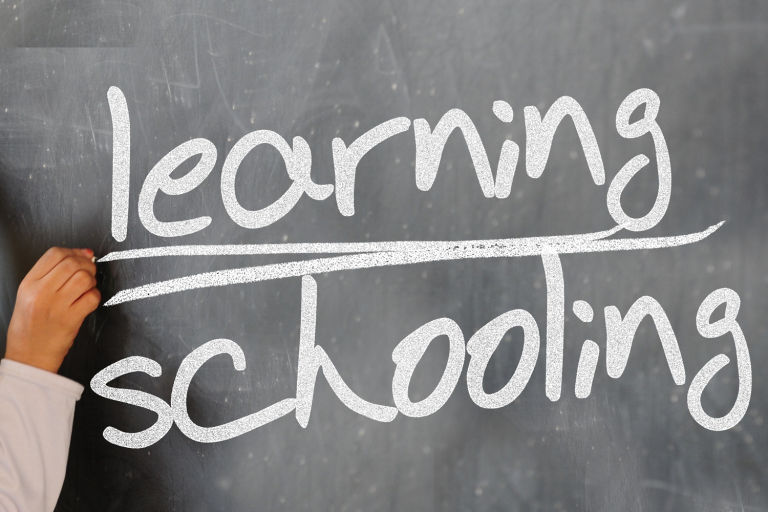In a previous blog post, I talked about the discussions going on about the future of American education. It is clear that a nationwide reform is necessary here in the United States. However, in doing so, we must consider that whatever changes we make translate into creating happy, motivated and fulfilled children.
We are witnessing some great schools around the world doing amazing things with children. We hear about countries like Singapore, Japan, Taiwan and China that perennially rank among the top in international education achievement rankings. What is their secret to their success? How their teachers are trained and treated? Is it in how the students are assigned homework? How their time is spent in school? The technology infused into the classroom?
Another good example of a country who has demonstrated a high status in global education is Finland. Their claim to success is that their students receive little to no homework and have only one mandatory test at age 16. Their high school dropout rate is nearly zero percent, whereas in some areas of the U.S., the dropout is a staggering 60%. In surveys conducted, students in these higher achieving countries have shown to be happy and enjoy the learning experience, while teachers appeared satisfied and valued. So, what is at the heart of a high graduation rate, happier child, and high academic achievement for the Finnish children?
Secret #1 – Add More Play Time to a Child’s School Day
Going outside for recess shouldn’t be just an elementary school thing and only for 30 or so minutes. The American Heart Association recommends that children and adolescents get at least 60 minutes of moderate to vigorous physical activity each day. Research has shown that physical activity is essential for optimal cognitive, psychological, social, and physical well-being. The Finnish allow 15 minutes of free time, typically spent outdoors, for every 45 minutes of studies, which promotes an active, healthy lifestyle.
Secret #2 – Teach Ethics and the Importance of Giving Back
There are many kids around the world who grow up in families who struggle socioeconomically. Financially, it is difficult for them to come up with money to give to someone else in need. However, giving back through service to charitable causes is one of the most incredible acts of prosperity that we can teach our children. Many students around the world are taught ethics courses from primary grades and taught such values.
According to a study done by World Volunteer Web, “youth who volunteer are more likely to feel connected to their communities, and tend to do better in school.” Giving back ultimately serves to empower not only the receiver of the kindness, but also the giver. A child’s overall health and happiness can dramatically improve just by doing random acts of kindness.
What does giving back look like? It comes in many different forms and students around the world can experience firsthand the benefits of donating their time, resources, and money toward many different causes.
There are so many great ways that children can give back and express their appreciation for others, including:
- Contributing food and clothing to children in need around the winter holiday season,
- Writing letters of appreciation to people in different professions for their time and service to making this world a better place.
- Creating personalized cards for military veterans.
- Working with service dogs to help train them for individuals in need.
- Helping underprivileged students throughout the school day or during afterschool activities.
Secret #3 – Help Children Make Connections with the World Around Them
The classroom should be a place for discovery, collaboration, and interaction that promotes engagement and learning for all students. Some of my best lessons have been ones that are tied into how something can or does directly affect my students’ lives. The projects that I assign my students integrate science, technology, and society and focus on problem-solving. For instance, at the beginning of the school year, my students choose a science career to research and go on to present their project during our “Science Career Fair Day.” This is an exciting time for students to share their knowledge with others and discuss not only the exciting things about their profession, but how their field helps to improve the lives of others. They also examine the global issues, such as the biggest challenges associated with the profession and what skills are necessary to succeed in the profession.
Students also read current event articles in Science World magazine throughout the school year. This connects current science news with pertinent topics that are discussed in class. What is great is that the stories often feature kids around the age of my students, breaking barriers and achieving incredible feats in the world of science, despite facing obstacles in their quest to make a difference in the world. We follow up these lessons through group discussion, debates, and critical thinking activities, which provides students with multiple perspectives on various global issues and also reinforces their capability to have such a profound impact at a young age.
Furthermore, the students in my classroom regularly perform inquiry-based lab activities where they apply the engineering design process to create “functional products.” This allows them to connect this approach to problem-solving into real world science application that involves researching a problem, developing possible solutions, making designs, testing and evaluating them, getting feedback on their product’s efficiency, redesigning, and so on. Moreover, students receive cross-curricular connections of science concepts in technology education, mathematics, ELA and Social Studies and continuously apply prior knowledge to newly learned information throughout the school year.
The Single Ingredient for a Child’s Success
If I had to suggest one thing for all parents and educators to focus on to help a child succeed, it would go back to a basic human principle. The foundation upon which all learning is laid is by making connections. Being able to relate to and connect with children from all backgrounds and abilities in this manner has been highly rewarding for me as a teacher. By creating a safe, caring environment where students can explore different possibilities and discover their abilities and passions through engaging lessons, thought-provoking activities, collaboration among their peers, and authentic assessments, students are best able to “discover and experience their magic.” What I mean by that is that they are able to display their multiple intelligences and tap into their full potential.
This is just the beginning of an exciting journey for making connections with your child. In my book The Ultimate Guide to Raising Teens and Tweens, you will discover the necessary tools for opening lines of communication, making meaningful connections and helping children make wise choices for a bright future!
“Magic is the complete enjoyment of the process of life.”
For Children!

Sources:
Pisa tests: Singapore top in global education rankings
The AHA’s Recommendations for Physical Activity in Children
Happy Teaching, Happy Learning: 13 Secrets to Finland’s Success







